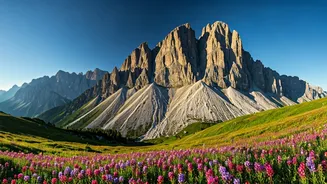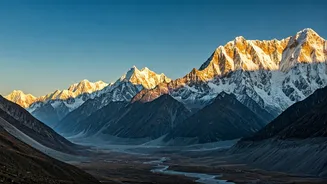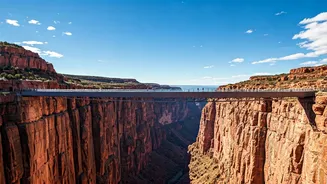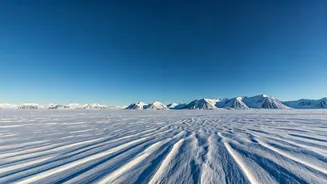Grand Teton's Majesty
The Grand Teton, a majestic peak in Wyoming, is renowned for its sheer granite faces and the stunning beauty of the Teton Range. This mountain is a prime
example of a fault-block mountain, with its dramatic vertical relief. Its jagged peaks offer challenging climbs for experienced mountaineers while the surrounding area, including the glacial lakes, provides a breathtaking setting for hiking and photography. The area's diverse wildlife, including elk, bison, and bears, adds to its appeal. Visitors can explore the area on foot, by horseback, or by taking a scenic drive through Grand Teton National Park, appreciating the mountain's grandeur from various vantage points.
Denali's Untamed Wilderness
Denali, formerly known as Mount McKinley, dominates the Alaskan landscape, standing as North America's highest peak. Its massive size and harsh environment make it a formidable challenge for climbers. This mountain is a symbol of the untamed wilderness. The sheer scale of Denali is awe-inspiring, with glaciers carving through its flanks. The mountain's weather conditions are notoriously extreme, testing even the most seasoned mountaineers. Beyond climbing, Denali National Park offers opportunities to witness the Alaskan wilderness, including wildlife viewing, from caribou and grizzly bears to Dall sheep. The park is a testament to the power and beauty of nature, offering a raw and unforgettable experience for adventurers and nature enthusiasts.
Mount Rainier's Glaciers
Mount Rainier, a volcano in Washington State, is instantly recognized by its snow-covered peak and numerous glaciers. These glaciers are essential to the mountain's ecosystem and also provide a stunning visual spectacle. The mountain's slopes are covered in old-growth forests and alpine meadows, offering a range of recreational opportunities. Visitors can enjoy hiking, camping, and climbing, or take a scenic drive around the mountain to appreciate its beauty. The park features diverse ecosystems that range from lowland forests to subalpine meadows and icy glaciers. Mount Rainier also serves as a critical source of water for surrounding communities, highlighting its significance to the Pacific Northwest.
Rocky Mountain's Peaks
The Rocky Mountains, a range spanning several states, encompasses a diverse array of peaks, each with its unique character. This mountain range presents a fantastic landscape that is popular with a vast number of visitors. The park offers visitors a chance to hike trails, camp amidst the natural scenery, and enjoy wildlife viewing opportunities. The Rocky Mountains provide opportunities for all levels of outdoor enthusiasts. The park is home to a varied collection of wildlife, including elk, bighorn sheep, and black bears. The majestic mountain vistas offer a panoramic view, allowing for a deep appreciation for the beauty of nature.
Great Smoky Mountains
The Great Smoky Mountains, a part of the Appalachian range, is famous for its fog-covered peaks and rich biodiversity. These mountains present a unique ecosystem. The mountains are known for the bluish haze that perpetually envelopes them, created by the interaction of the trees' volatile organic compounds with sunlight. The park's old-growth forests are home to a wide range of plant and animal life. Numerous hiking trails, waterfalls, and scenic drives provide opportunities for visitors to connect with nature. The Great Smoky Mountains offer a diverse landscape, making it a great destination for people seeking a peaceful outdoor adventure.








